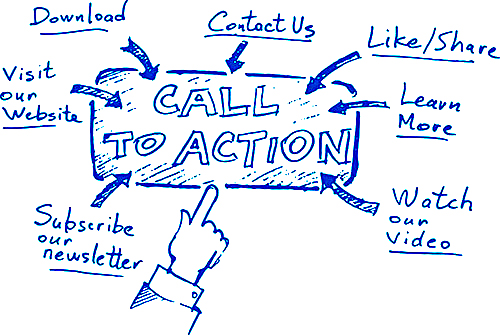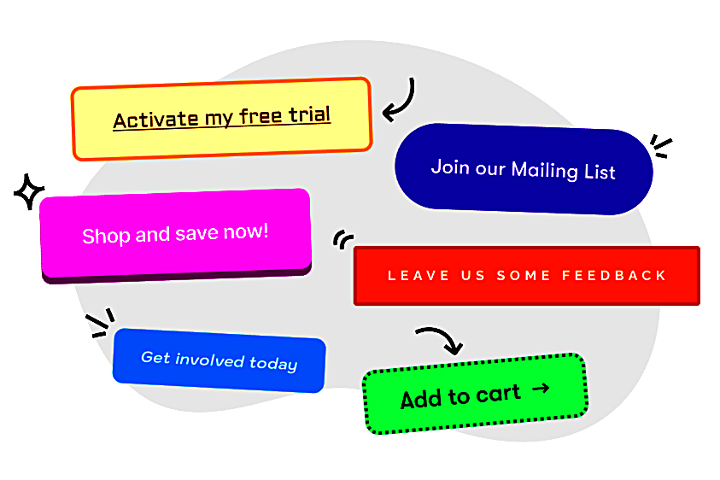Introduction
A Call to Action (CTA) is a key element in content marketing. It's more than just a button or hyperlink—it's a tool that encourages your audience to take meaningful action. Whether it's subscribing to your newsletter, purchasing a product, or leaving a comment, a well-crafted CTA guides the audience towards these next steps.
CTAs are essential for driving engagement, clicks, and conversions. In this guide, we’ll break down what makes a CTA effective, the various types of CTAs you can use, and how to strategically place them for maximum impact.
What Is a CTA and Why Is It Important?
A Call to Action (CTA) is a prompt in your content that encourages the reader or viewer to take a specific action. These actions could include subscribing to an email list, sharing content on social media, making a purchase, or downloading a guide. CTAs can be presented as simple text links, buttons, or even pop-up forms.
CTAs are important because they guide your audience on what to do next. Without a clear CTA, readers might consume your content and leave without engaging further. By having a well-placed CTA, you can convert passive visitors into active participants, customers, or subscribers.

Examples of Effective CTAs
- “Download Your Free Guide”
- “Start Your Free Trial Now”
- “Join Our Newsletter for Exclusive Tips”
- “Shop the Collection”
- “Leave a Comment Below and Let Us Know What You Think”
Each of these CTAs tells the audience exactly what to do and provides a benefit for taking that action.
Elements of a Great CTA
An effective CTA consists of several key components. By following these principles, you can create CTAs that compel your audience to take action:
Clear and Direct Language
Clarity is crucial when it comes to crafting CTAs. Your audience should instantly understand what you’re asking them to do. Use simple and direct language that leaves no room for confusion. For example, instead of saying “Click Here,” be more specific: “Download the Free E-book.”
Action-Oriented Words
To motivate your audience, use strong action verbs. Words like "Download," "Get," "Subscribe," "Learn," and "Shop" are powerful because they tell the audience what to do in a straightforward way. Action-oriented language also creates a sense of movement, which is crucial for pushing people to act.
Creating Urgency (Optional)
Adding a sense of urgency can be highly effective, especially in promotional CTAs. Phrases like “Limited Time Offer,” “Hurry, Ends Soon,” or “Only 3 Spots Left” can encourage the audience to act quickly before they miss out on an opportunity.
Benefit-Focused Messaging
Your audience is more likely to click a CTA if they understand the benefit. Highlight how the action will improve their situation. For example, instead of just saying, “Sign Up for Our Newsletter,” try “Sign Up for Exclusive Access to Weekly Tips and Free Resources.” This tells the audience what they’ll gain by subscribing.
Design and Placement
Visually, CTAs should stand out. Use bold colors, large fonts, or a button style that contrasts with the rest of your design. Placement is also important—CTAs should be easy to find and in areas where users naturally look, such as the end of a blog post or in a sidebar.
Types of CTAs
There are several different types of CTAs, each designed to prompt a specific kind of action. Depending on your goals and content, you can mix and match these types to optimize your strategy.
Link CTAs
These are the simplest CTAs, where text is hyperlinked to direct users to another page. They’re typically used within blog posts or articles to guide readers to related content, resources, or offers.
- Example: "Learn more about effective content strategies here."
Button CTAs
A button is visually impactful and often used for important actions like signing up or making a purchase. Buttons draw more attention than text links and often come with bolder design elements.
- Example: “Start Your Free Trial”
Form CTAs
Form CTAs are used when you need to collect information from users, such as email addresses for a newsletter. These are often embedded within the content, pop-ups, or at the end of a post.
- Example: “Sign up for weekly updates and exclusive content” with a form to enter an email address.
Engagement CTAs
These encourage user interaction, like asking for comments, likes, shares, or votes. Engagement CTAs help increase interaction with your content, making it more visible to others.
- Example: “Let us know your thoughts in the comments below!”
Social Media CTAs
These are designed to prompt users to engage with you on social media, either by following your accounts or sharing content.
- Example: “Follow us on Instagram for daily tips and inspiration!”
Where to Place CTAs in Your Content
Strategic placement is key to ensuring your CTA gets noticed and acted upon. Here are some ideal places to incorporate CTAs:
End of Blog Post
One of the most effective locations for a CTA is at the end of a blog post. After a reader finishes your content, it’s natural for them to be prompted to take the next step. This could be subscribing, reading more related content, or downloading a guide.
- Example: “Enjoyed this post? Sign up for our newsletter for more tips like these!”
Middle of Content
Sometimes, adding a CTA mid-way through an article works well, especially if it's a long-form post. If the CTA is relevant to the surrounding content, it can drive engagement before the reader reaches the end.
- Example: “Want more tips on boosting engagement? Download our free e-book now.”
Sidebar or Pop-up CTAs
Pop-up forms or sidebar CTAs can be used to offer content upgrades, capture leads, or direct users to other parts of your website. These are ideal for collecting emails or offering discounts, but make sure they’re not too intrusive.
- Example: “Subscribe now for a 10% discount on your first purchase!”
Examples of CTA in Action
Here are practical examples of how to use different types of CTAs across your content:

Blog Post CTA (Link and Engagement)
- Text: “Loved this article? Don’t forget to check out Part 2 of our series for more insights. Also, leave a comment below to share your thoughts!”
Newsletter Signup (Form CTA)
- Text: “Want more expert tips delivered straight to your inbox? Sign up for our newsletter and stay updated.”
Social Media CTA
- Text: “Follow us on Twitter for daily updates and join the conversation!”
Button CTA (Action-Oriented and Urgency)
- Text: “Start Your Free Trial Now! Limited Time Offer” (Designed as a large, bold button).
How to Test and Optimize CTAs
Creating CTAs is just the first step. To ensure they’re effective, you need to test and optimize them regularly.

A/B Testing
Experiment with different versions of your CTAs to see which ones perform better. For example, test the wording, color, or placement of your CTA buttons. Run A/B tests to compare results and refine your approach based on the data.
Tracking CTA Performance
Most websites and email platforms provide analytics on how well your CTAs are performing. Monitor metrics like click-through rates (CTR), conversion rates, and bounce rates to determine what’s working and what’s not.
Refining Your Approach Based on Data
Use the insights from your testing and analytics to make improvements. If a certain CTA has a low conversion rate, tweak the design, change the wording, or try placing it in a different location on the page.
Conclusion
An effective CTA is an essential part of any content marketing strategy. By using clear, direct language, action-oriented words, and strategic placement, you can guide your audience towards taking the actions that matter most—whether that’s subscribing to your newsletter, making a purchase, or simply engaging with your content.
Remember, CTAs are more than just an endnote—they’re an opportunity to engage, convert, and build a deeper relationship with your audience. Test them, refine them, and make sure they align with both your goals and the needs of your audience.
FAQs Section
What is the best type of CTA for blogs?
The best type of CTA for a blog often depends on your goals. For example, if you want more subscribers, a form CTA offering a content upgrade (like a free eBook) works well. If engagement is your goal, an engagement CTA encouraging comments or shares might be best.
How can I create urgency in my CTAs?
You can create urgency by using phrases like “Limited Time Offer,” “Ends Soon,” or “Only X Left in Stock.” These phrases push the audience to act quickly before they miss out.
Where should I place CTAs for maximum engagement?
CTAs placed at the end of blog posts, in the middle of the content, or as pop-ups tend to drive the highest engagement. Make sure they’re visible without disrupting the user experience.
Can too many CTAs hurt my content?
Yes, too many CTAs can overwhelm or confuse your audience. It’s best to stick to one or two CTAs per page and ensure they align with your content and audience goals.
How often should I update or test my CTAs?
You should test and refine your CTAs regularly, especially if you notice low engagement or conversions. Start with A/B testing small elements like wording or design, and adjust based on performance.
By following these tips, you can create CTAs that drive engagement and ultimately lead to better conversions for your blog, website, or business.
How to Create Effective CTAs: A Guide to Boost Engagement and Conversions